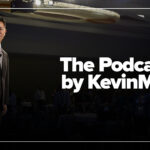Many health care providers are still coming to terms with the opioid epidemic. The development of drugs such as Oxy opened a door for widespread opioid use, and the aftermath of this failure has led to rampant addiction in our country’s most vulnerable. As the system gradually regulated legal opioids, dangerous alternatives like heroin and fentanyl increased in prevalence. Other nonopiate medications like amphetamines have also become common in communities. Criminalization of drug users has done nothing to lessen the rising numbers of overdose deaths. At the same time, stigma and prejudice for drug users have permeated society, and have pushed a vulnerable population away from vital services.
The medical field is as culpable for these acts as any other industry. Despite addiction centers, faculty involved in public health and policy, and a commitment towards patient well-being, medical centers continue to be places of prejudice for people who use drugs. As a new generation of physicians prepare to staff emergency rooms and inpatient services, it is time to adopt a radically different approach to drug use and addiction.
It is no overstatement that medical discrimination is common for those who use drugs. In one study of those who inject drugs, conducted in New York City, 78.1 percent of participants reported an instance of stigma when interacting with the health care system. They described overwhelming feelings of distrust for all medical providers, as one participant put it, “Maybe if I stop the drugs, then maybe they’d care?” Another qualitative study found that previous stigma strongly influenced whether or not participants accessed health services. Despite plentiful research, the medical community continues to be an unsafe place for drug users.
But why is it so important to make people who use drugs (PWUD) comfortable, and encourage them back to medical centers? Simply put, they represent one of the most vulnerable populations in the United States, and their deaths are preventable, on so many levels. When PWUD have an abscess and will not go to the emergency department, it festers and they die. When they use dirty needles and contract hepatitis, they forsake the hospital and slowly pass due to cirrhosis rather than face harsh adjudicators in the ED. As health care providers, we must do better, to build trust with this vulnerable community, and provide safe, accessible health care.
The harm reduction model may provide the framework for our health care system to improve our care. The model is founded on “a belief in, and respect for, the rights of people who use drugs.” By using practical strategies, harm reductionists save lives of those in their care and those in the community. Drug use, particularly injection, has been found to be a common cause of HIV and HCV infection. These infections can spread from unsafe practices like sharing needles or using unclean supplies. Through the criminalization of drugs and those who use them, we have eliminated sources of clean supplies, and stigmatized the knowledge of safe practices. Harm reduction organizations provide supplies, education, and counseling, to ensure that participants can use drugs safely. They also ensure that their participants have a place to escape the stigma that follows them. Most importantly, however, harm reduction has been shown to be effective at reducing harmful health outcomes associated with drug use.
Despite its successes, harm reduction is not a very popular view in the United States. There is one point on which the general populace, and many health care workers, seem to disagree with harm reduction, which is that giving people who use drugs clean supplies and educational materials “enables” them.
In the context of needle exchange programs specifically, if someone does not have a clean needle, they will use a dirty one. Doing so will increase their chance of infection and death. Using other forms of accepted drug use as an example, cigarettes, alcohol, and marijuana are tightly regulated to keep the general public safe. Those people are allowed, and at times encouraged by society, to use drugs, and do not have to worry about the safety of their mediums. The effects of providing people with clean needles are positive: decreased mortality and spread of communicable disease. Patients are not “encouraged” to use, and illicit drugs are never provided to patients.
Most importantly for the medical community, our decisions should be decided by one simple tenet: Do no harm. It is not up for interpretation whether our patients are making a choice to use drugs; it is our mission to treat them to the best of our ability. We are not medical professionals to impose our moral framework on our patients; in fact, it is an idea stressed to students frequently that the needs of your patients are to be put above your own. Therefore, it is paramount that we begin to treat people who use drugs with not only quality care, but also an empathy that will build trust, enabling them to come back to the emergency room or outpatient facility that they desperately need.
In this, I believe harm reductionists have shown the medical community a way forward. There is a two-pronged approach to applying this ideology in medical practice. First, there is a change in attitude: treating people with compassion and kindness, because they are as deserving as any other patient. No more kicking people out of emergency rooms, throwing away clean supplies, or stigmatizing the experiences of patients who may use drugs. Second, there are changes in medical practice and intervention. Hospitals should have sterile supplies and educational materials for distribution, to ensure our patients do not return with abscesses or infections. In addition, withdrawal should be avoided by actively providing patients with safe forms of treatment. In doing so, we keep our community healthy, and ensure that the next time these patients have a wound or a broken leg, they feel comfortable returning to our institutions. There is no room in this field for prejudice of any kind, and it is time to bring these individuals back into the fold.
Dylan Angle is a medical student.




















![How physicians can preserve trust after medical errors [PODCAST]](https://kevinmd.com/wp-content/uploads/Design-2-190x100.jpg)

![Collaborative partnerships save rural health care from collapse [PODCAST]](https://kevinmd.com/wp-content/uploads/Design-3-190x100.jpg)
